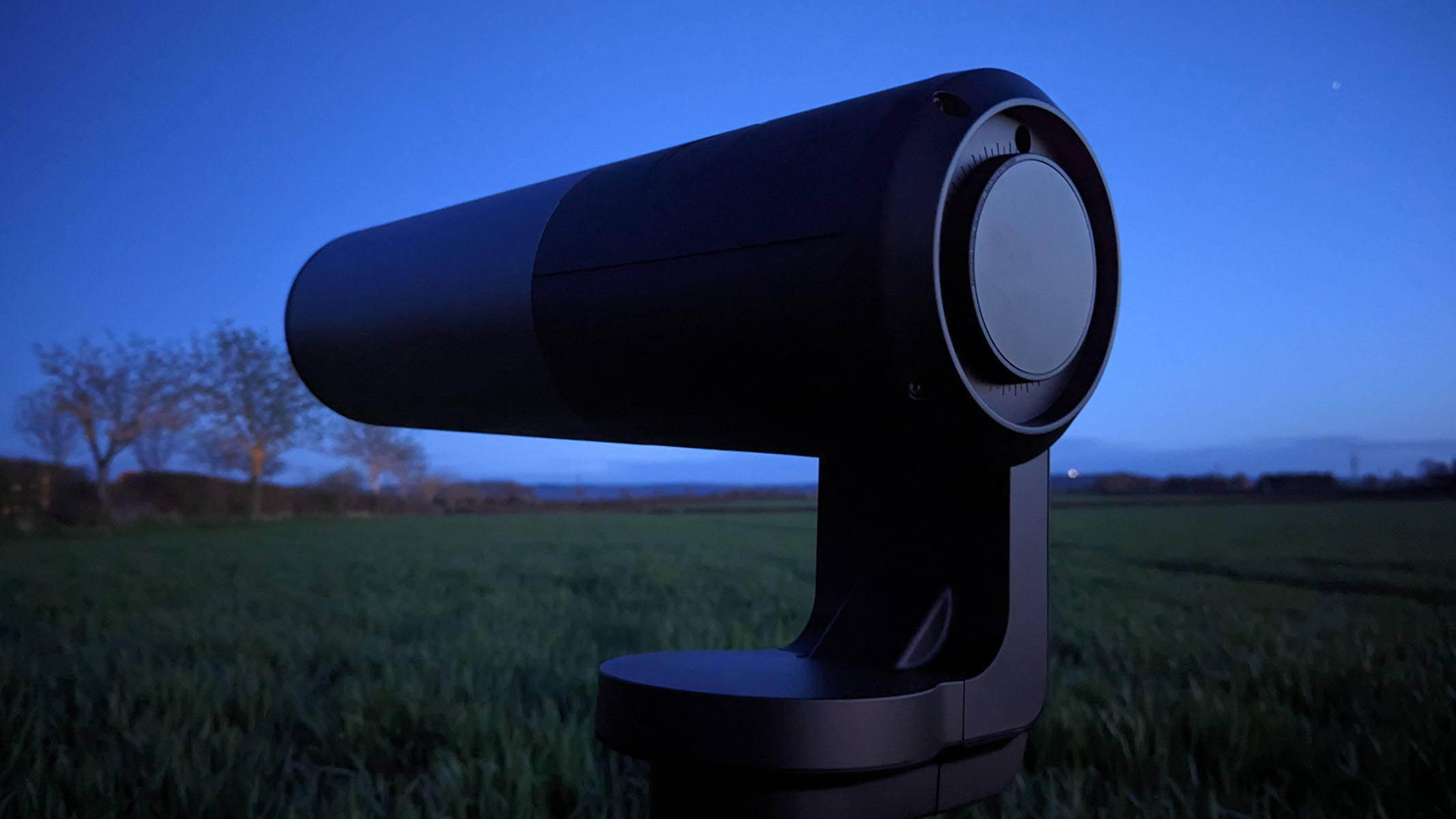Live Science Verdict
Designed towards beginners with no experience or power astronomers that simply don't have the time or patience to set up traditional telescopes, this smart telescope can find celestial objects in a matter of seconds.
Pros
- +
View and image stars in seconds
- +
App-lead operation is simple
- +
All-in-one design
Cons
- -
No option for upgrading
- -
Limited planetary views
- -
Must use smart device to operate
Why you can trust Live Science
The Unistellar eQuinox 2 is the successor to the original eQuinox smart telescope. It's slightly beefed up with a 6.2MP image sensor and slightly wider field of view but other than that, from the outside it looks largely the same. This isn't a gripe though. The styling, handling and operation of this elegant-looking smart telescope is a joy and it's all powered through the Unistellar app available for Android and iOS devices (and tablets too).
Image resolution: 6.2MP
Focal length: 450mm
Storage: 64GB
Field of view: 34 x 47 arc minutes
Mount: Motorised alt-az
Battery: 11hrs
Mirror diameter: 114mm
Weight: 9kg
While it'll never be a full replacement for larger telescopes with wide apertures and the ability to swap out eyepieces for varied magnifications and additional accessories that traditional astronomers have come to know and love, it's definitely packed with everything one needs to get started. It ships with just two main parts: the telescope tube and the tripod but also comes with some handy instructions and QR codes to learn more online. A set of tools are also available should you need to maintain it or the tripod over the years to come.
Perfect for those in a rush or beginners who have limited awareness of the heavens the eQuinox 2 will automatically detect where in the night sky it is looking and within a few minutes be ready to 'go to' your desired night sky object with the press of a button. If you're looking for scope filled with modern tech and smart features, this is definitely one of the best telescopes you could choose.
Unistellar eQuinox 2 smart telescope: Design
- Attractive modern aesthetics
- Solid build, especially when parked
- Smartphone app works without a hitch
Unistellar has kept very similar stylings to the original eQuinox telescope in that it looks almost identical to us and seems exactly the same size and weight. However, that's no bad thing - it's stunningly beautiful and minimalist in design. The grey metal tube is pre-attached to the single arm mount that is cased in a black casing. The mount has just one single button on it for power to keep it simple.
A quick slot down into the tripod, two screws take care of the rest and hold the telescope rock-solid. Even when lifting the tripod and telescope to reposition when in use we felt no concern over whether the telescope would detach.
Anyone familiar with using DSLR or mirrorless cameras and photographic tripods will find it a breeze to set up within just a minute or two. Synchronizing it to the Unistellar app on our smartphone was pain-free too, except operating it in twilight which we'll come onto later.
Overall, this all-in-one design is a triumph. However, it's also thwarted by the inability to really upgrade the telescope. Traditional refractor or reflector telescopes can be improved with superior eyepieces, finderscopes or other accessories to increase their versatility which the eQuinox 2 cannot. However, the convenience and speed of use (plus the in-built camera) will outweigh this drawback for many casual, beginner or time-restricted astronomers.
Get the world’s most fascinating discoveries delivered straight to your inbox.
Unistellar eQuinox 2 smart telescope: Performance
- Fantastic, detailed views of galaxies and nebulae when using Enhanced View mode
- No problems with the Unistellar app; speedy and smooth operation
- Would like to see it working around dusk as well as at night
Once synchronized with the Unistellar app on our Android smartphone we very quickly slewed the telescope using the Catalog mode by selecting from the myriad celestial objects presented to us. A press of the 'go to' button and the telescope smoothly and quietly moved into position until it was right in the middle of the frame. Viewing the objects through the smartphone (this is the only way to view) we could initially see a clear, but ultimately quite grainy image.
But after pressing the Enhanced View option the telescope started to intelligently image and stack several long exposures atop one another, using some smart in-telescope or in-app processing to reveal better detail in the object. We were also pleased to see a significant reduction in image noise too.
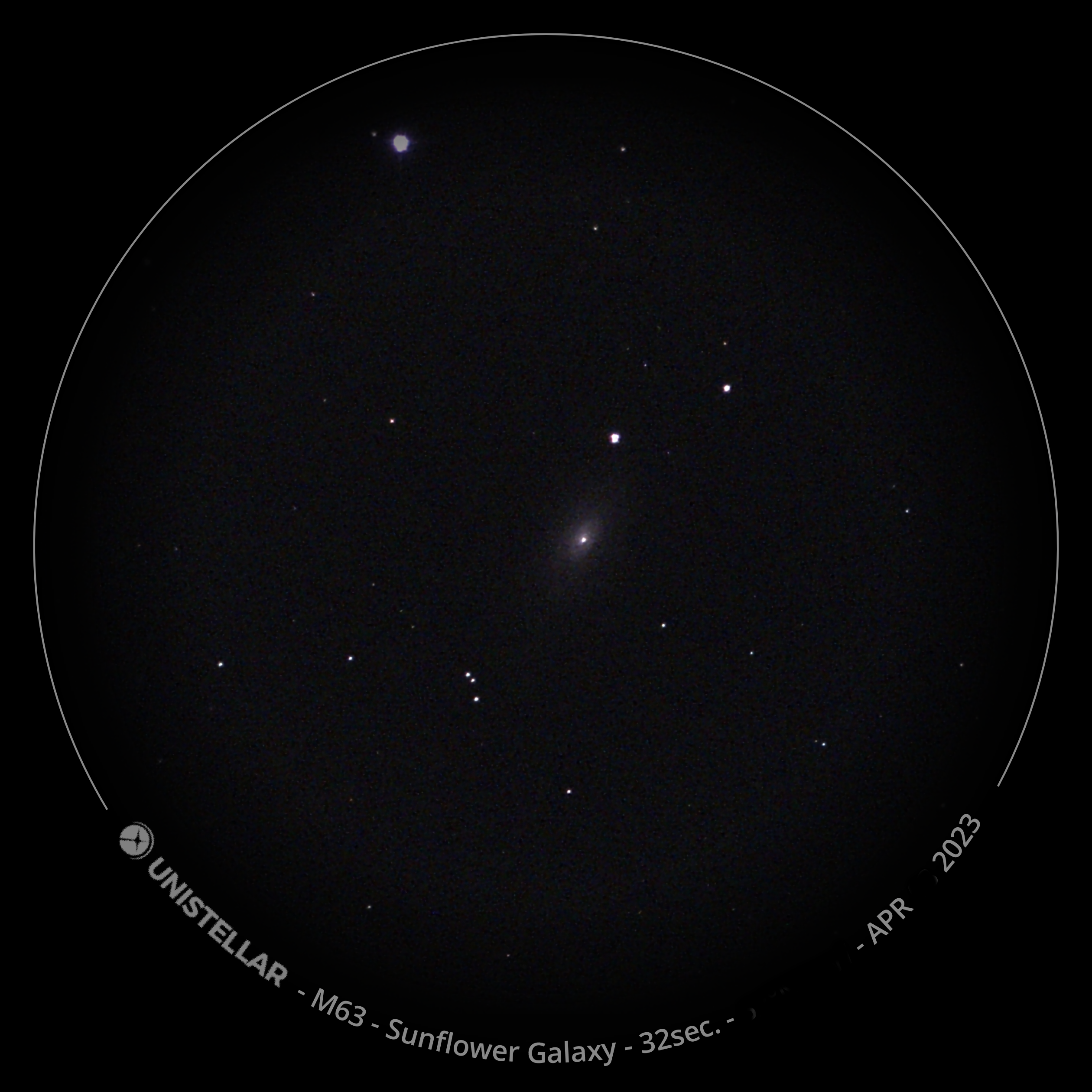
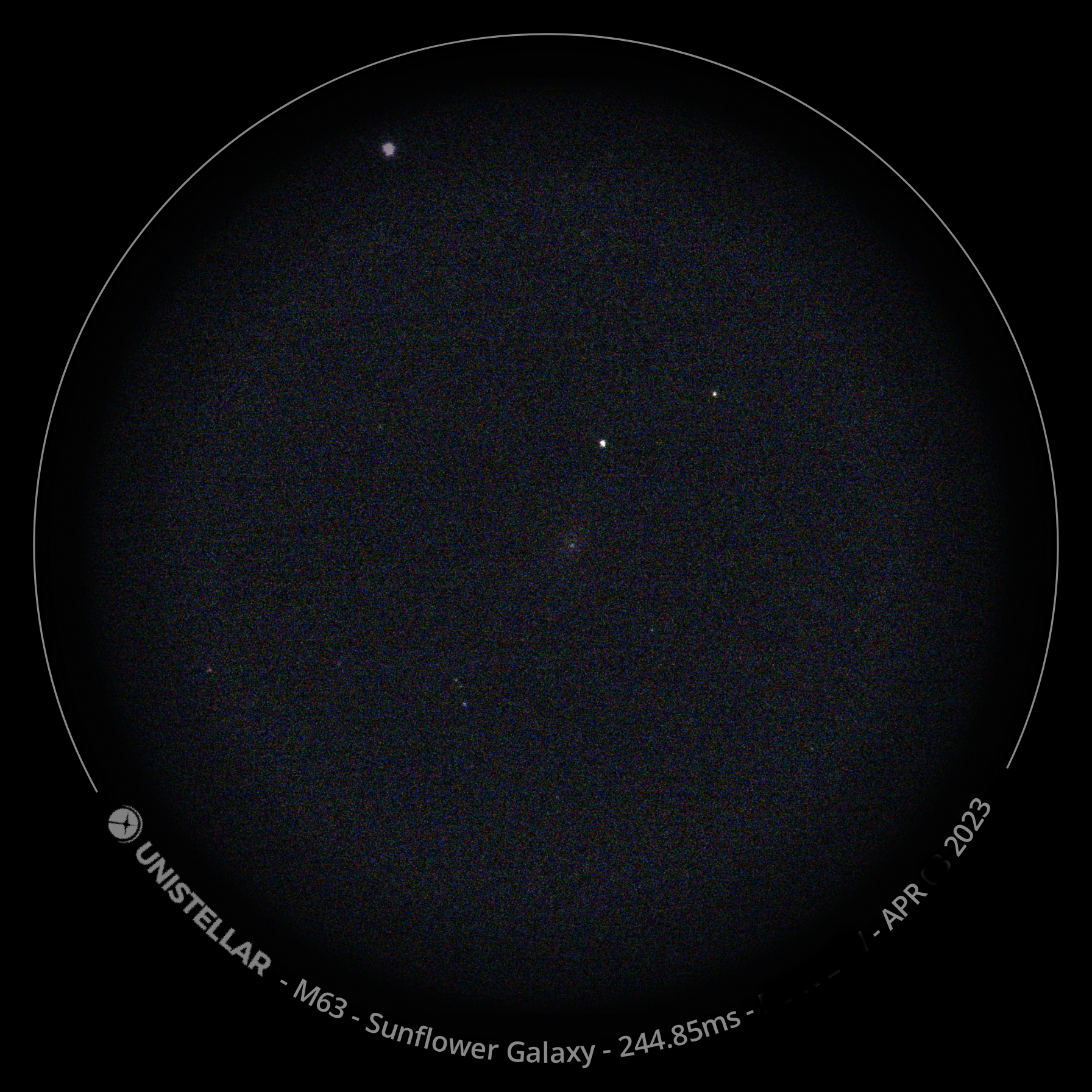


While we're historically not used to viewing the cosmos through a smartphone, save for tracking Hubble and JWST images on our news feeds, it made exploring the night sky fun. Information about the objects is supplied on-screen too and we had no trouble locating Messier 63 the Sunflower Galaxy, M3 a globular star cluster, M82 the Cigar Galaxy, or one of our favorites the M51 Whirlpool Galaxy all within a matter of moments.
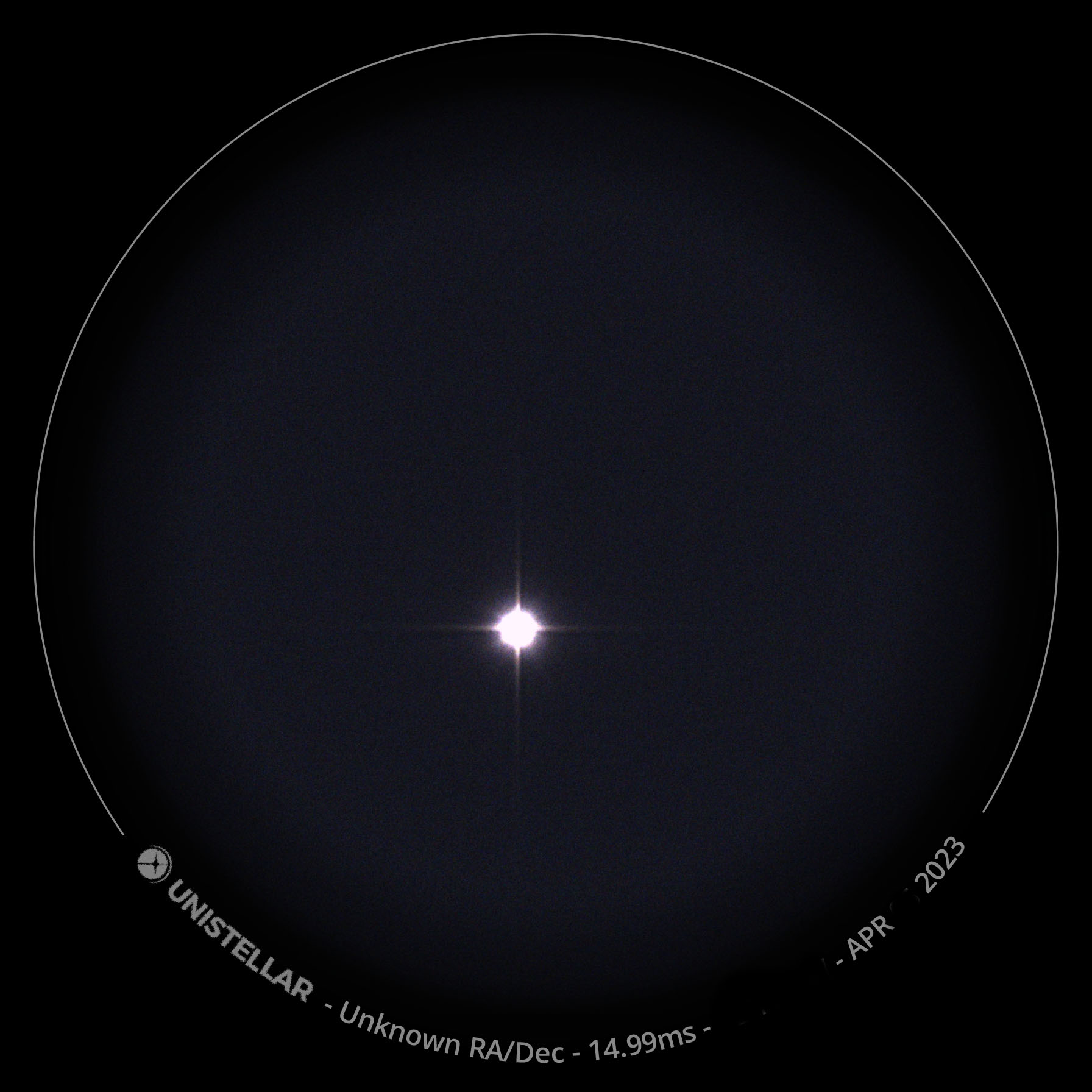
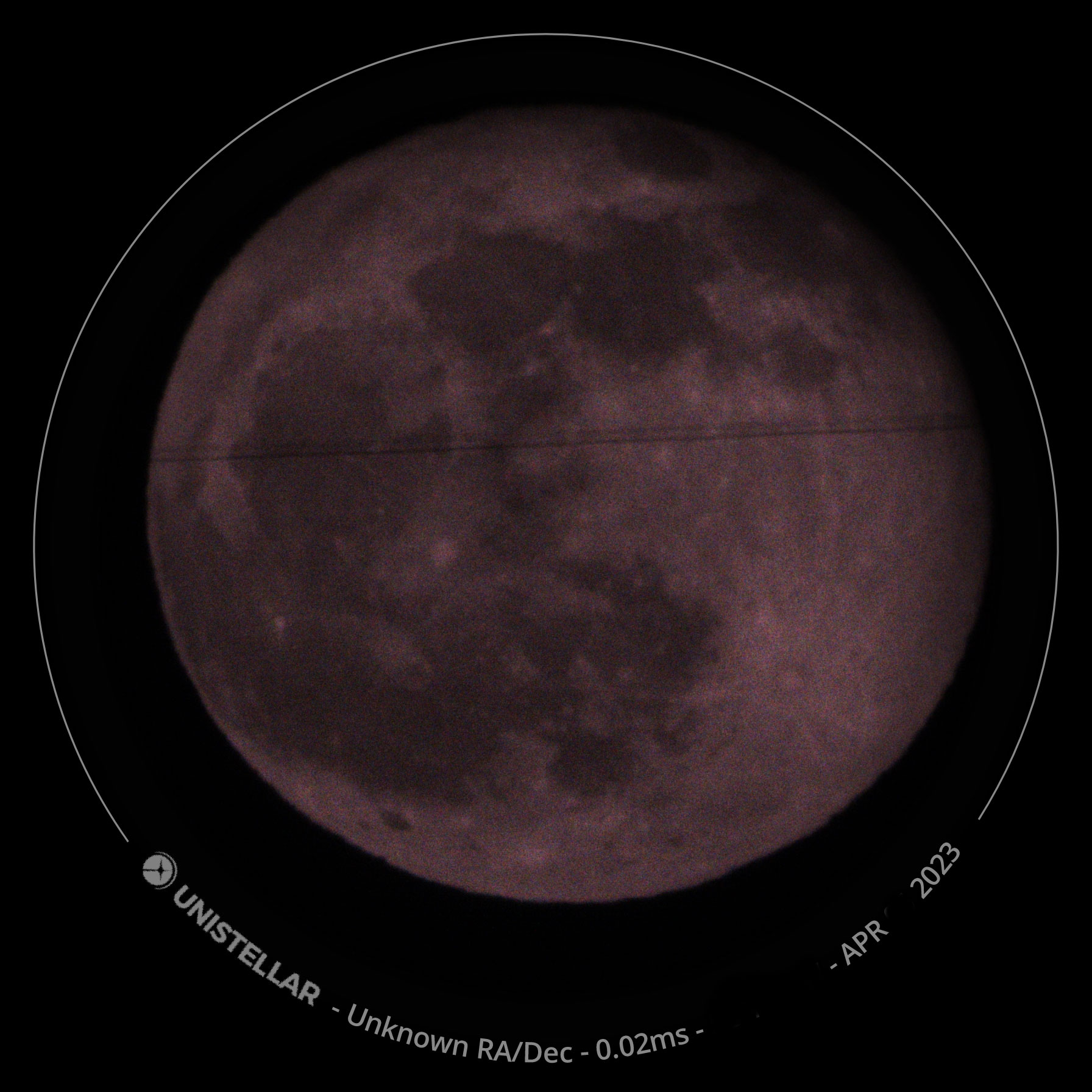
Lunar views were ultimately disappointing by comparison because of an inconsistent shift in coloration and difficulty to get sharp images. In fact, it was hard trying to orientate the telescope during twilight, even when manually aiming the eQuinox 2 directly at the moon, despite there being several bright stars and planets available.
However, once it was dark enough we could orientate no problem. One big benefit to the eQuinox 2 is the ability operate the camera even through walls and windows meaning the telescope could stay outside while we kept warm inside (great for casual observers who want to share the exploration with others or stay cozy on colder nights).
Unistellar eQuinox 2 smart telescope: Functionality

- Tricky to travel with unless using Unistellar bag (for an additional cost)
- Contribution opportunities to citizen science is exciting
- Quick and easy to share astrophotography with friends and family
The Unistellar eQuinox 2 is, as already stated, pretty much exactly the same as its predecessor in terms of styling and size. That makes it a little difficult to travel with if you decide not to opt for the additional telescope bag that can accommodate the telescope tube, mount and tripod plus a small toolkit.
However, it's still much more portable than a traditional not-smart telescope. That's because of its simple design that leaves no additional finderscopes, eyepieces or other accessories sticking out from the main tube or mount. Literally all we had to do was take it out of the box, mount the telescope on the tripod and turn it on to start using it with the Unistellar app.
This convenience is what will appeal to most astronomers, whether beginner or more advanced. It is so quick and requires such little knowledge that a real plug-and-play attitude can have you exploring the night sky like never before. That, plus the telescope's in-built Smart Light Pollution Reduction technology makes it useful in towns and cities, in backyards, as much as taking it out to the middle of nowhere to escape the night lights.
Should I buy the Unistellar eQuinox 2 smart telescope?
The Unistellar eQuinox 2 might not be cheap, but once you start adding up the quality of the telescope, the tripod and the fact it has an in-built camera and easy-to-use smart device app to use it with, it starts looking a lot more tempting. By the time you've bought all of those items separately, got the adapters required to mount them, added a power bank for a dedicated astrocamera and taken the time to align everything correctly, you could've taken dozens of images with the eQuinox 2.
That, plus the ability to connect with other observers and contribute towards citizen science projects makes it a brilliant choice for astronomers that want to stay engaged with the space-loving community but may otherwise be edged out, due to finances or current skill level.
If this product isn’t for you
Want a telescope that will grow with you as you develop your astronomy skills? The Celestron NexStar 8SE is possibly one of the best telescopes you can buy. It's much cheaper and this catadioptric Schmidt-Cassegrain telescope is still small and lightweight enough to be taken on location. It benefits from taking more powerful eyepieces and upgrading multiple other accessories is all part of the fun with a more traditional telescope like this.
Need something a bit cheaper? The Celestron Inspire 100AZ is a refractor telescope for those on a tight budget. Equipped with the largest aperture in Celestron's Inspire range we'd recommend this to beginners as it comes with everything you need to get started: an Alt-az mount, StarPointer pro red dot finderscope, erect image star diagonal for easier observing and two eyepieces (10mm and 25mm) for greater flexibility viewing night sky objects.
Still want a smart telescope but want another option? Well, there's a reason the Vaonis Stellina smart telescope sits in our best telescopes buying guide. Smaller and slightly more compact than the eQuinox 2, the Stellina is powered by a Sony CMOS image sensor to provide astronomers with views and photographs of the cosmos.

Jase Parnell-Brookes is the Managing Editor for e-commerce for Live Science and Space. Previously the Channel Editor for Cameras and Skywatching at Space, Jase has been an editor and contributing expert across a wide range of publications since 2010. Based in the UK, they are also an award-winning photographer and educator winning the Gold Prize award in the Nikon Photo Contest 2018/19 and named Digital Photographer of the Year in 2014. After completing their Master's degree in 2011 and qualifying as a teacher in 2012, Jase has spent the last two decades studying and working in photography and publishing in multiple areas, and specializes in low light optics and camera systems.

